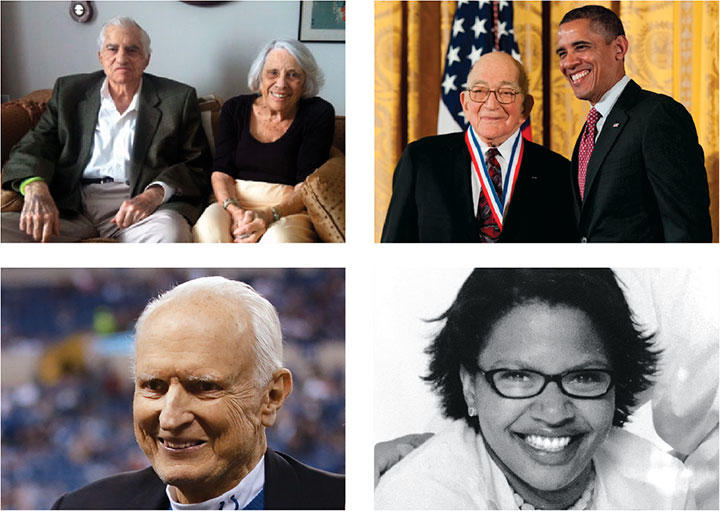From the Editor: Lessons for Living
If you’re ever in the mood for a life lesson, a good life to consider would be the one led by Frank B. May ’43 — particularly what he did toward the end of that life.
Twice widowed, May was living in a retirement community when he met Margaret Berry in 2015. She was 90; he was 92. Within a week, they were engaged. Within a month, they were married. Here was a man who knew what he wanted and went after it. He did not overthink. He did not procrastinate. He did not let failures get in his way — indeed, previous unsuccessful proposals to other women did not diminish his enthusiasm for finding true love. The newlyweds agreed that, as Margaret said, “we don’t have much time, so [we] might as well use it.” May died last spring.
Among the alumni Princeton lost last year are some who are widely known, starting with former University president Bill Bowen *58 (read our tribute and alumni remembrances at paw.princeton.edu) and including mathematician Lloyd Shapley *53, a father of game theory who won a Nobel Prize in economics; physicist Sidney Drell ’46, who advised presidents on nuclear weapons and was awarded the National Medal of Science; and William Hudnut III ’54, the longest-serving mayor of Indianapolis, credited with revitalizing the city.
Many others are examples of lives well lived, in ways big and small. Karen Schoonmaker Freudenberger *83, most recently a lecturer at the University of Vermont and a lifelong consultant to international nonprofits, set up the Vermont Goat Collaborative when she realized that immigrant families were importing goat meat. Because of her, such families are raising goats and chickens and growing vegetables. Michelle Cormier ’98, a lawyer, made an impact through her deep friendships, wild sense of humor, and ability to put others at ease, no matter who they were or where they came from, classmates told PAW. Vienna-born Robert Hirschkron *56 remembered the generosity of those who helped him escape the Nazis in 1940; he repaid the debt by volunteering almost every day for the last 25 years as a tutor to immigrants studying for their GEDs.
Each February, PAW profiles alumni who died in the previous year, most of them relatively unknown: scholars and entertainers, explorers and analysts.
This issue also includes an expanded Memorials section. The large number of memorials waiting to be published has frustrated many alumni, particularly those in older classes. Over the years, PAW has made various attempts to remedy this problem, such as smaller type and shorter memorials — none of them completely successful.
It seemed appropriate to try again in this issue of PAW. Publishing these extra Memorials pages nearly eliminates our backlog. It’s not a permanent solution, but another February — and another chance to catch up — will always be coming around.












1 Response
A.V. Kokatnur ’47
8 Years AgoDrell and his ’47 Classmates
Sidney Drell, pictured with President Obama in the Feb. 8 From the Editor column, is ’47, not ’46. Sid entered Princeton during World War II in July 1943 with the first contingent of civilians in ’47, just under 300 of us. He received his Princeton degree in June 1946 and in 1994 was the recipient of the Woodrow Wilson Award.
A short explanation of our unusual class history: Four more civilian sections of ’47 joined us in October and November 1943 and January and February 1944, the dates tying new engineering students to the semester schedule of Army units then on campus (in uniform), and new A.B.s to the different schedules of Navy and Marine Corps units. Ultimately, ’47 grew to 766 members, including accepted freshmen by then in the armed services, and others in campus training units who stayed after demobilization and were academically parallel to ’47 civilians.
Confusingly, the disruptions caused by the war resulted in members of ’47 receiving Princeton degrees on 19 dates between 1945 and 1954 (with two more getting their degrees much later, in 1980 and 2000). And some got their undergraduate degrees from other universities where, after enlisting, they were sent to units similar to those at Princeton. Many of them retain their loyalty to the Tiger (and even pay class dues). Hence our unofficial class motto: “War torn ... but peaced together.”
We’re proud of Sid, his affiliation with ’47, and his very significant contributions to science and to our country.